Small Towns Near Winfield, Kansas
Posted by graywacke on June 6, 2024
First timer? In this formerly once-a-day blog (and now pretty much a once-a-week blog) I use an app that provides a random latitude and longitude that puts me somewhere in the continental United States (the lower 48). I call this “landing.”
I keep track of the watersheds I land in, as well as the town or towns I land near. I do some internet research to hopefully find something of interest about my landing location.
To find out more about A Landing A Day (like who “Dan” is) please see “About Landing” above. To check out some relatively recent changes in how I do things, check out “About Landing (Revisited).”
Landing number 2666; A Landing A Day blog post number 1112
Dan: Today’s lat/long (N37o 13.177), W96o 45.001) puts me in southeast Kansas:
Here’s my local landing map:
My streams-only map shows that I landed in the watershed of Turkey Creek, on to Grouse Creek:
Or, from:
Creek to:
Creek.
Zooming back, you can see that Grouse Creek discharges to the Arkansas R (152nd hit); on, of course, to the MM (1038th hit).
The Orange Dude managed to get fairly close to my landing:
And (just before the Googlemobile turned around), here’s what he sees:
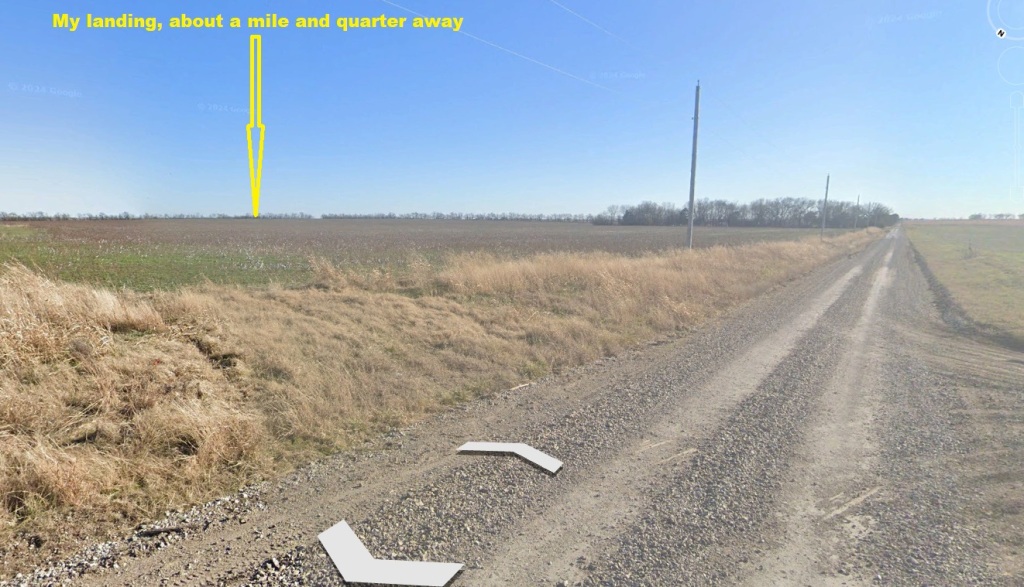
I can see that this is going to be one of those a-little-bit-of-this-a-little-bit-of-that kind of posts.
I’ll start with Oxford (pop 1008), which, according to Wiki, is named after Oxford University. Hmmm. That’s interesting. Think an alum was an early prominent citizen? Maybe. Before Oxford was Oxford, it was Napawalla. Given a choice, I’d have stuck with Napawalla.
There’s a cool old mill building in Oxford:
Also, Oxford is the hometown of Vingetta “Vingie” Roe. Vingie was Wikiclickable:
Roe wrote more than thirty novels, mostly Westerns “with a feminist twist. Dozens of her stories were published between 1906 and 1930 in publications including Sunset, Munsey’s, McCall’s and Collier’s. Her first novel was The Maid of the Whispering Hills (1912) which was praised as “a big novel by an author of great promise” in a San Francisco Call review.
“I stand for clean literature”, she told an audience of writers in 1929. “I have never written a dirty sex story and I never will.” Her stories were adapted into eight silent films and one sound picture.
Winfield (far and away the largest local town, pop 11,800) was named for Winfield Scott, who I’ve heard of but know nothing about. But before I discuss Reverend Scott (he was an Army chaplain and Baptist minister), here’s a short quote from Wiki:
In 1887, the State of Kansas established the Kansas State Asylum for Idiotic and Imbecile Youth, where it was the dominant local employer for 117 years.
Wow. “Asylum for Idiotic and Imbecile Youth.”
So, back to Wiki:
Winfield was founded in 1870 and named for Rev. Winfield Scott, who promised to build the town a church in exchange for the naming rights.
Sounds to me like Rev. Scott thought very highly of himself. Obviously, the town was named after the reverend, so I wanted to find the church that he built.
It turns out that the First Baptist church is that church. From their website:
Winfield, Kansas was founded in 1870. It was named for Rev. Winfield Scott, who promised to build the town a church in exchange for the naming rights to the town. In November 1870, after that very sermon, First Baptist Church was founded.
The website says nothing about how Rev. Scott was involved in building the church. Oh, well . . .
He fought (and was wounded) in the Civil War, and was known as the “fighting parson.” He was quite the mover and shaker, and after stopping in Kansas, made his way to Arizona and California, founding churches. He was an entrepreneurial agriculturist, and was the first person to grow peanuts, citrus trees, and grapes in the Salt River valley near Phoenix.
In fact, Scottsdale Arizona (part of the Phoenix metro area) was named after him.
Hackney was named after lawyer William P. Hackney. From the Cowley County Historical Society:
He worked on the family farm until he joined the Union Army in 1861, at the age of 19.
Here’s a picture of Bill taken the day that he enlisted:
From Wiki:
He was wounded twice and rapidly promoted during the war. He was the mayor of Winfield and then a Kansas State senator. While senator, he successfully lobbied to get the Kansas State Asylum for Idiotic and Imbecile Youth located in Winfield. [I don’t think he had anything to do with naming the institution.] In 1881, he introduced a joint resolution in giving voting rights to women. [Way to go, Mr. Cowley -you’re ahead of your time!]
Heading west to Geuda Springs. There are two saltwater springs in Geuda Springs that feed into Salt Creek. They were deemed curative both by Native Americans as well as those who followed.
In the late 1800s, Geuda Springs (unsurprisingly) turned into a resort with a lodge:
And a dam was built across Salt Creek to create a salt lake:
Today, the springs are still there, but the resort and dam are gone . . .
Moving on to Arkansas City. As is my wont, I must address the proper pronunciation of “Arkansas.” Remembering that we’re in Kansas, I’m sure you can guess how the locals pronounce their city’s name . . .
In fact, there’s a section of the Wiki article about the city entitled “Pronunciation of City Name.”
The Philadelphia Phillies own Darren Daulton was born in Arkansas City. He achieved hero status as a catcher for the Phillies (1983-1997), including the memorable 1993 team that was knocked off by the Toronto Blue Jays in the World Series. I’m a Phillies fan, and memories of that 1993 defeat cause me pain to this day.
Darren had some alcohol abuse issues (to put it mildly). From Wiki:
He was arrested for driving under the influence (DUI) in Pinellas County, Florida, in 1988, and his driver’s license was suspended for a year after he refused to take a breathalyzer test. His license was again suspended in the late 1990s due to unpaid speeding tickets; he received at least five speeding tickets during that time period, including one for driving in excess of 100 miles per hour in a 65-mile-per-hour zone.
While under his second license suspension, he was involved in a single-vehicle accident,causing $20,000 worth of damage to his BMW sedan. He again refused to be tested, and was again charged with DUI and also with driving with a suspended license and failing to appear in court.
Two years later, Daulton was arrested a third time for driving with a suspended license and DUI, after again refusing to be tested for alcohol.
He was also arrested for battery against his wife. He served two and a half months in jail and spent another two and a half months in drug rehabilitation
Ouch. I was vaguely aware of Darren’s alcohol issues, but because of his hero status, local Philadelphia media evidently downplayed his transgeessions.
In the years following his arrests and jail time, Daulton began to turn his life around, acknowledging his shortcomings and doing charitable work within the local community.
He died in 2017 from brain cancer, specifically glioblastoma. From Google AI:
Six former Philadelphia Phillies players, Tug McGraw, Darren Daulton, John Vukovich, John Oates, Ken Brett, and David West, died from glioblastoma (GBM), a rare and aggressive brain cancer, before the age of 60.
All of the players played for the Phillies during part of their careers at Veterans Stadium, which was demolished in 2004. The Philadelphia Inquirer investigated the deaths and found dangerous “forever chemicals” in the stadium’s artificial turf. The turf contained 16 different types of per-and polyfluoroalkyl substances (PFAS), which the EPA says can cause adverse health effects.
When six fatalities is compared to the number of Phillies with similar or greater exposure to the turf, the rate at which GBM was found to be about three times higher than the average rate for the demographic, which is white men between the ages of 40 and 70.
So, me being me, I had to roll up my sleeves and see if the above analysis holds water. I found the following data from the American Cancer Society / National Institute of Health:
– The incidence of for malignant brain cancers amongst white males is 715 per 100,000. (I realize that there have been plenty of blacks and Hispanics who played for the Phillies. But white males have the highest incidence rate, so I used it.)
– 49% of malignant brain cancers are glioblastoma (with a corresponding incidence rate of 358 per 100,000).
Pertinent baseball stuff:
– Veterans Stadium saw 33 seasons of Phillies baseball.
– The active roster for a major league baseball team is 26. But considering injuries (and associated call-ups to the minor leaques), I’ll use 40 as a number of players exposed to the artificial turf each year.
– I need to estimate the average number of years that each player spent playing at the Vet. Boy, I don’t know. I’d say three, but to be conservative, I’ll say two.
So let’s do the math. 40 players/year x 33 years = 1,320. But since I say that players played an anaverage of two years at the Vet, I’ll divide by two. So, the number of potentially exposed Phillies is now 660.
358/100,000 x 660 would be the expected glioblastoma incidence rate for 660 white males if there were no impacts from the artificial turf. The answer is 2.4.
How about that!? Google AI said 2. I could easily adjust my numbers a little and also get 2.
I think that these numbers are compelling. I know that cancer clusters can be misleading (I actually was an expert witness on a cancer cluster legal case, and I realize that the analyses are complex and not always straightforward).
That said, I believe that having a cancer rate three times what it “should” be is significant . . .
Also – the number of variables is overwhelming – how does PFAS get into a baseball players internal systems? Inhalation? Skin contact? How much? Does PFAS cause glioblastoma? Did the Vet turf change through the years?
And then – how about the Philadelphia Eagles? And did other baseball parks use the same turf? Anyway . . .
Moving on to Silverdale (pop 50). Not much to say here. The town exists because high quality limestone has been quarried here since 1874. Here’s the GE shot, showing the quarry operation on the south side of town:
The OD visited to see what he could see. The quarry is still active, and he found this area where slabs of limestone are stored:
Not much in Maple City, either. Although I rarely feature baseball players, I didn’t have a choice. So, Ferrell Anderson was born in Maple City. From Wiki:
Anderson was a catcher signed by the New York Yankees in 1939 (after four years playing football at U of K). He was purchased by the Brooklyn Dodgers from the Yankees system in 1942.
[I assume he played some minor league ball, but he appeared in zero MLB games so far].
Only a few months into the season he was drafted and went into the Army. He left the service in 1945 and returned to the Dodgers minor league system. He appeared in 79 games for the Brooklyn Dodgers in 1946.
[OK. 79 games with the Dodgers.]
He was traded to the Philadelphia Phillies in 1951 and then purchased by the St. Louis Browns. In 1953, he was sold again, this time to the St. Louis Cardinals.
[Zero MLB games from 1947 through 1952. I assume he played some minor league ball.]
He played in 18 games for the Cards in 1953. As a Dodger, Anderson caught Ed Head’s no-hitter on April 23, 1946.
So, he played in a total of 97 games; batted .285; hit 2 home runs; had 15 RBIs; scored 20 runs; struck out 25 times; walked 18 times; hit no triples; hit 12 doubles; had 1 stolen base (never caught stealing); had 7 sacrifice bunts; grounded into 6 double plays; was hit by 4 pitches.
Obviously, he was not fleet-of-foot (but then catchers rarely are): zero triples, one stolen base. He sure couldn’t retire on his baseball income . . .
I’ll finish up with Dexter (pop 225). In the early 20th century, it was clearly a thriving community, as shown by the back-in-the day photos:
And here’s the school:
Poor old school!
I’ll close with this barn shot posted on GE by Michael Humbolt just a mile and a half south of my landing:
That’ll do it
Greg
© 2024 A Landing A Day
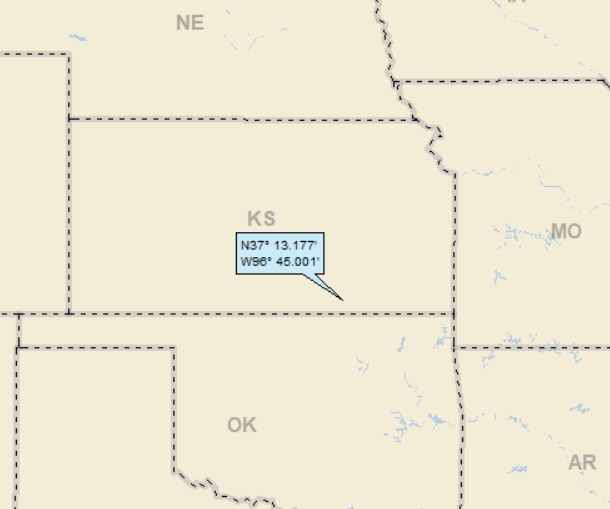










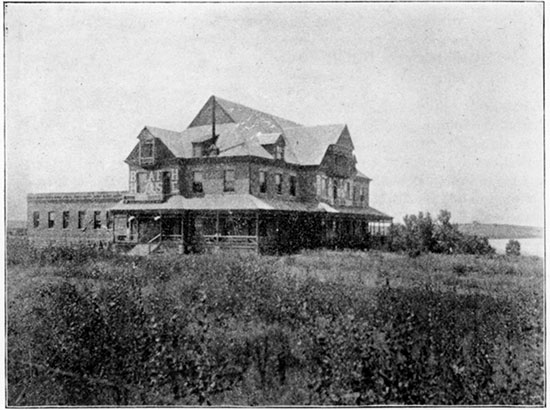




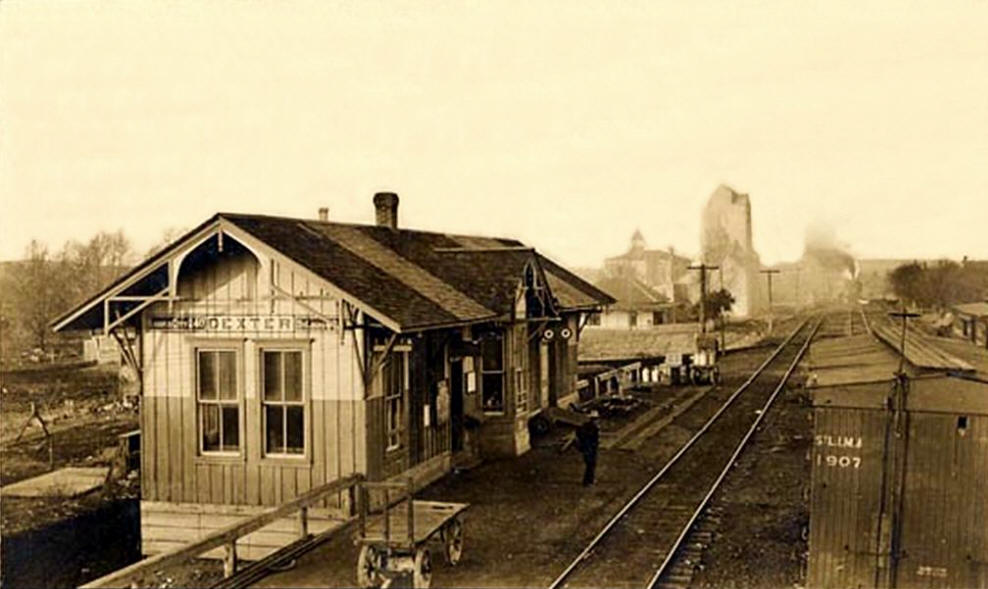
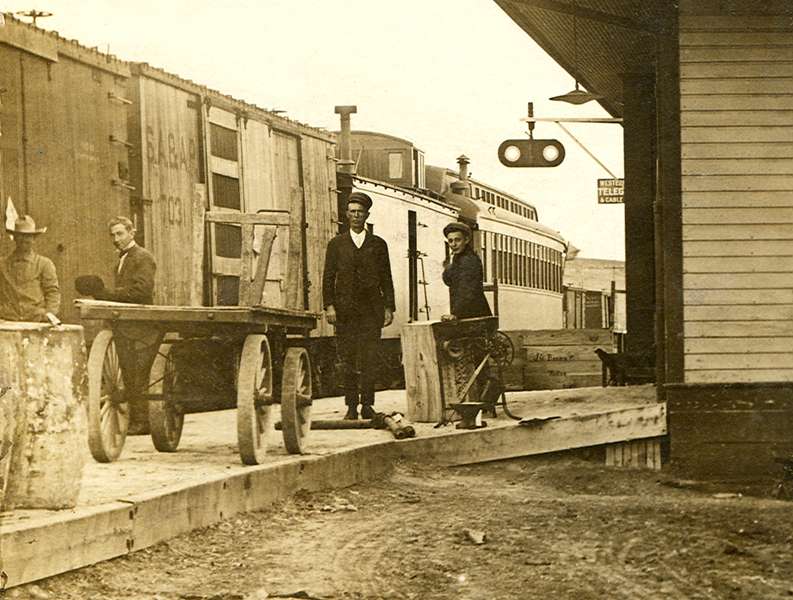






Leave a comment